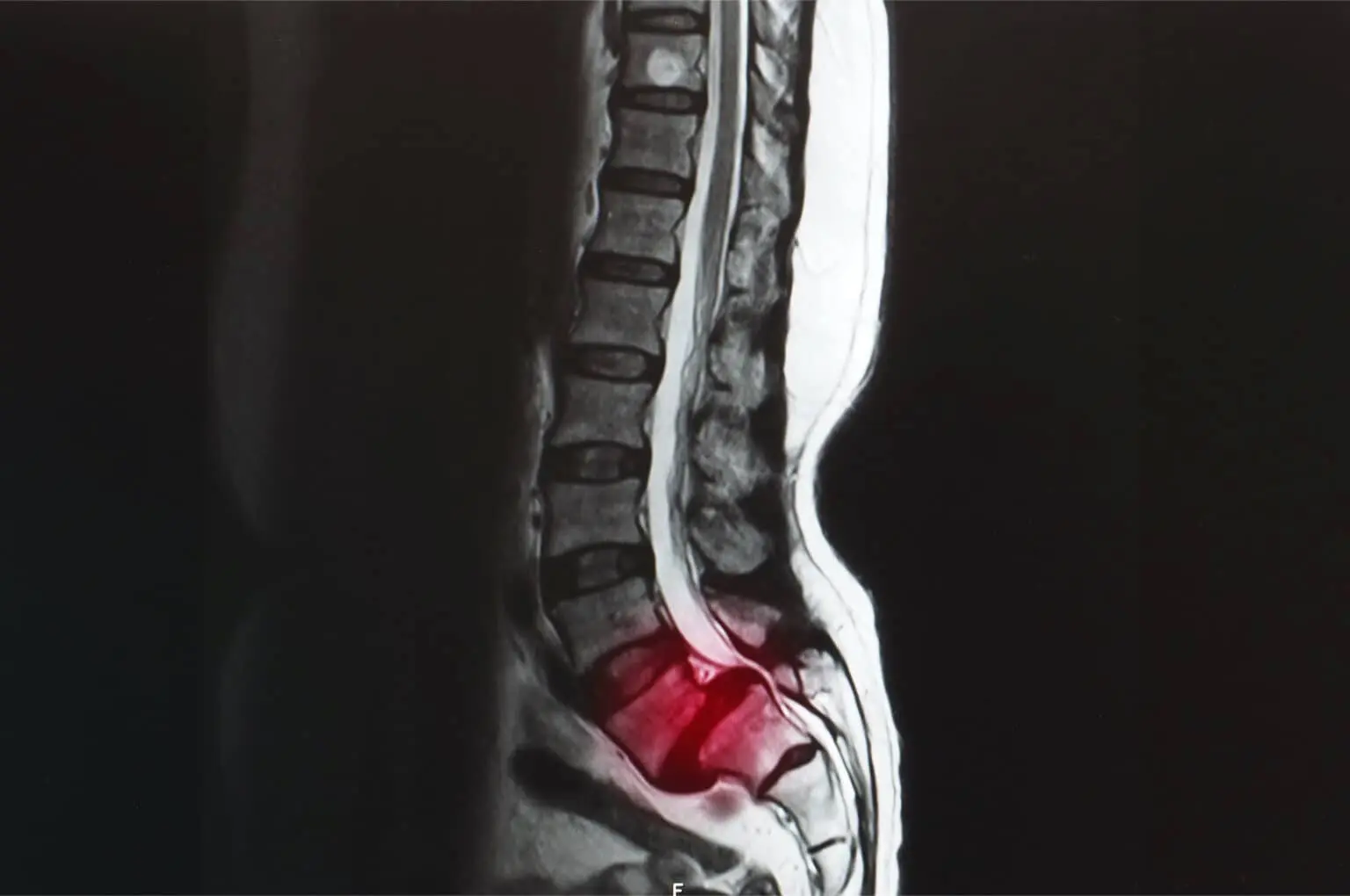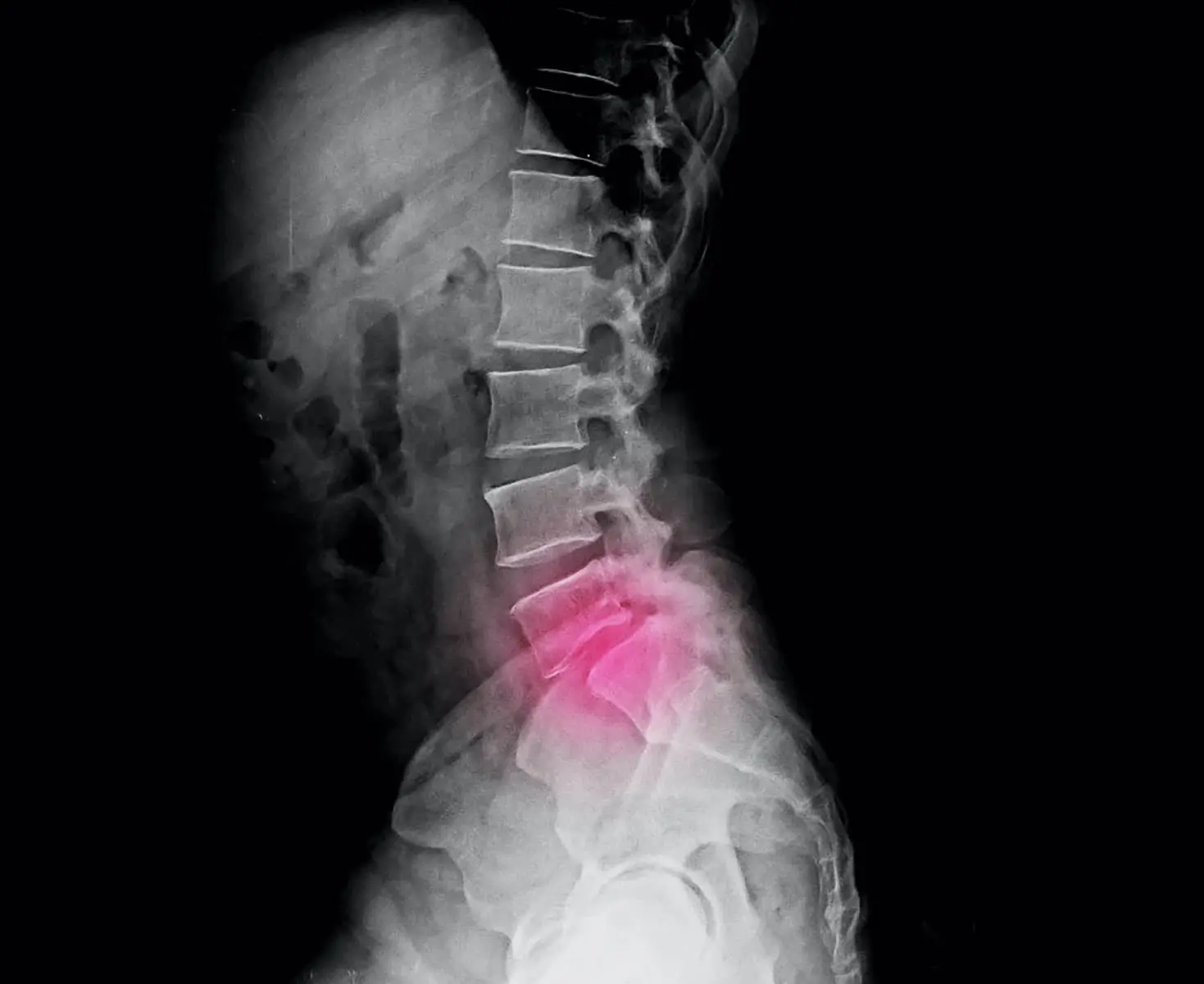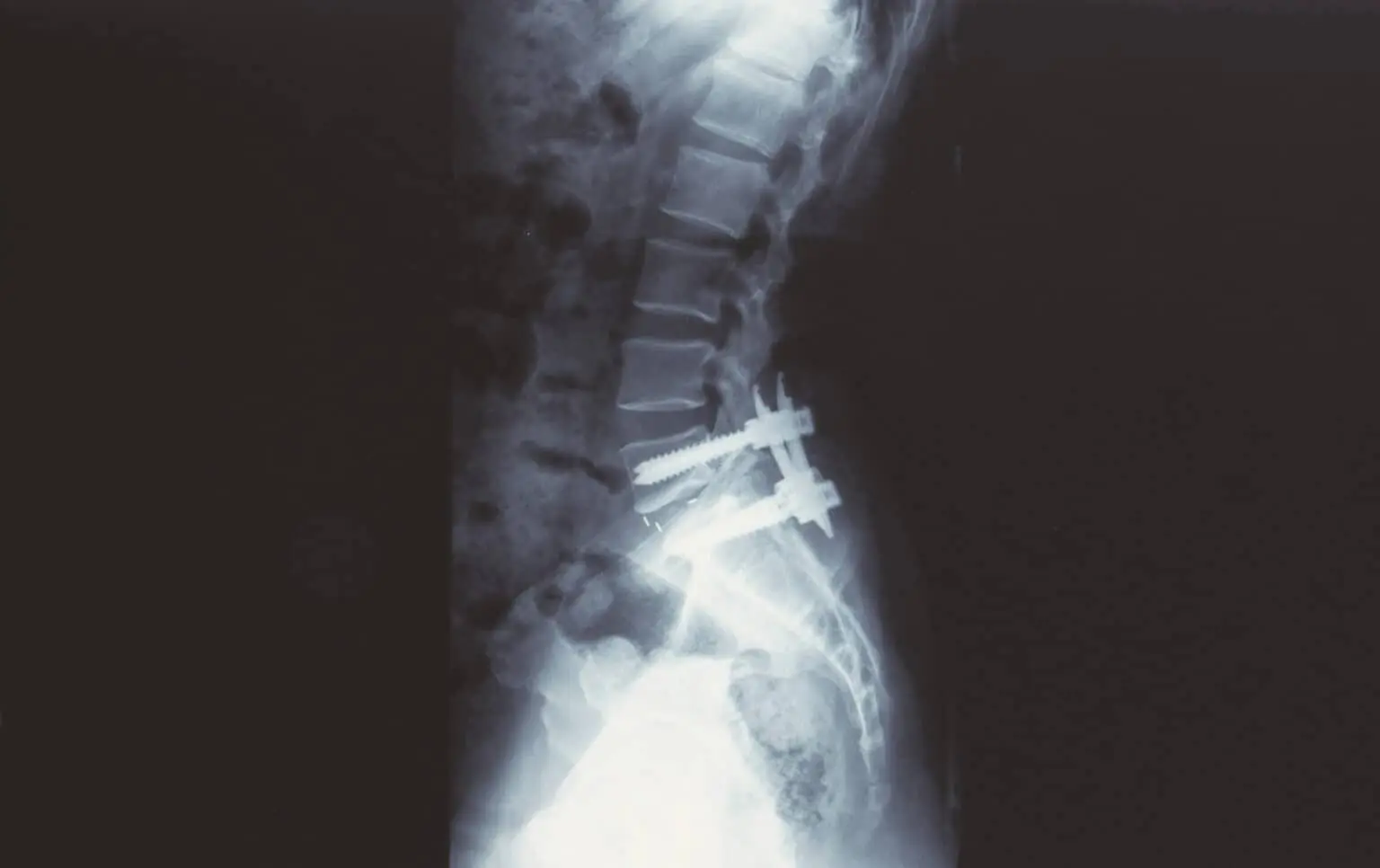Lumbar Sprain
On this page, we will try to explain in detail about what is lumbar sprain, its symptoms and types, lumbar slippage surgery, and the post-operative recovery process. I wish you all healthy days.
What is Lumbar Sprain?
The bones that make up our spine are regularly stacked in healthy people. All the edges of these bones are aligned with the bone before and after them. This regular arrangement between the bones in the spine is a structure that increases flexibility and endurance. This flawless structuring feature consists of structures that connect the spines, which we call disc and facet joints. These structures act as cushions and bridges between the bones of the spine. The bones of the spine, which extend from the lower part of the neck to the coccyx, allow the human body to stand in a balanced way. At the same time, they protect the spinal cord. In medicine, when spondylolisthesis is mentioned in the lumbar region, it is understood as spine or lumbar shift or lumbar disc shift among the people. In the case of this problem, one of the bones of the spine moves forward than the other, compressing the spinal sac and the nerve roots that emerge from it, as a result of which the symptoms of lumbar displacement occur. There are multiple reasons for this problem. These include age-progressive degeneration, congenital anomaly, trauma, infection, surgical intervention or tumor. Waist displacement is more common between the spinal bones in the lumbar region, which we call L4, L5, and the bones in the area we call the sacrum, which the people call the tailbone.

What are the Symptoms of Lumbar Sprain?
Symptoms of low back displacement may include low back pain, pain in the hip or both legs and/or feet, inflammation, numbness in one or both legs. Depending on the degree of slippage, the symptoms of lumbar displacement in patients may be exacerbated and paralysis may occur by loss of strength. Low back pain, which is the most common symptom of low back displacement, is detected in approximately 10% of patients admitted to the hospital. This problem, which is slightly more common in women, may show similar symptoms to a herniated disc. But there are noticeable pathological anatomical differences between them. In lumbar hernia, the soft cartilage called the disc between the spinal bones tears the structure capsule and exits and presses the spinal cord or the nerve roots coming out of it. When lumbar displacement symptoms occur, one of the spinal bones slides over the other and pressure is put on the spinal sac or nerves. Sometimes, both herniated disc and lumbar displacement can be found in the same patient. In these patients, symptoms of lumbar displacement can be seen while in the dynamic process, that is, when bending over, standing, sitting or rising from bed. If the lumbar shift is not treated, it can progress over time and lead to even more serious findings.

What Are the Types of Lumbar Sprain?
We see that we can collect this in two groups. Congenital or acquired. Congenital lumbar shift is called in medicine in congenital spondylolisthesis has a developmental disorder in the bones of the spine. It is 2 times more common in women. This problem, which is caused by the weak connection between the spinal bones, that is, the joint area, can cause low back pain during adolescence. One of the most common types of slippage, acquired lumbar displacement, is divided into three types: degeneration spondylolisthesis, spondylolysis and traumatic spondylolisthesis. Degenerative spondylolisthesis occurs as a result of deterioration in the spinal bones and surrounding connective tissue with advancing age, as a result of which two spinal bones slide on each other. Aging-induced degeneration is detected in the spinal bones and surrounding connective tissues. This type of spondylolisthesis is mostly seen over the age of 40. This may also be accompanied by lumbar spinal stenosis, popularly called spinal canal narrowing.
In addition to pain in the lower back, legs or feet, patients may have symptoms of waist shift such as loss of strength in the legs or feet, increase in waist tilt, difficulty walking, shortening of walking distance. In degenerative spondylolisthesis, activities such as standing or walking for a long time may increase complaints. The name of spondylolysis among the people is stress fracture. The waist region is an area that is exposed to more load than other parts of the body. When this problem occurs, the bone in the upper part of the spine slides downwards. Stress fractures usually do not cause symptoms at rest. In the future, findings may occur as a result of the shift that develops accordingly. In addition, stretching and spasms are common in the connective tissue surrounding the spine, especially in the muscles. In this case, which we call spondylolysis, sometimes the fracture line can be detected radiologically in X-ray or computed tomography scans, although there are no symptoms in patients. Traumatic spondylolisthesis usually occurs by accident. It is a sudden process. In these patients, low back pain often increases when the patient is standing and moving. In addition, local pain in the area of trauma, if the spinal cord sac or nerve roots are affected by the event, neurological findings can be detected. The degree of slippage of the spinal bones is also often in line with the severity of the trauma. Due to trauma, the facet joints that connect the spinal bones may break or shatter. Traumatic spinal shifts can lose their static structure in this case and come to a situation where the problem can only be solved by surgery.

How is Lumbar Sprain Treated?
Treatment is classified into two main groups. One of them is the drug and / or physical therapy, which we call conservative treatment, and the applications performed by the pain department we call algology, and the other is surgical treatment. After neurological examination and imaging examinations, if no significant problem and mobility in the spine are detected in the patient, it may be considered to treat the patients with medications, physical therapy or algology applications. The aim of physical therapy programs is to correct the patient's living comfort that is impaired due to the symptoms of waist shift together with the treatment applications made to the patients in the clinic and exercise programs that strengthen the abdominal and back muscles. In algological applications, the spinal canal, nerve roots leading to the legs, joints connecting the spinal bones are injected and/or radiofrequency applications under strerish conditions in the operating room. In order to perform physical therapy and algological applications, patients should not have loss of strength in the legs and feet, urine and / or fecal incontinence, which are among the symptoms of lumbar displacement.
Algological applications may be preferred in patients who do not benefit from drug or physical therapy programs but do not meet surgical criteria. If the symptoms do not decrease in patients despite medication, physical therapy and algology applications or if neurological examination findings appear; patients should be evaluated for surgical intervention. Before deciding for lumbar shift surgery, it is necessary to check whether the shift in the spine is mobile and whether this causes symptoms of lumbar displacement. The patient who has slipped in the waist but no movement is detected does not necessarily need to be surgically treated. However, if the shift increases with movement in lumbar dynamic graph, which is called moving waist film among the people, the patient should be operated. In this group of patients who are not operated, the shift progresses further over time and compresses the spinal cord sac and the nerve roots that exit from it and go to the legs, causing severe pain in the patients, waist shift symptoms such as loss of strength in the legs, tingling and numbness, shortening of walking distance and very severe pain. In cases where the problem progresses further, very negative consequences such as loss of sexual function and urinary or fecal incontinence, which we call sphincter defect, may be encountered. When we say lumbar slip surgery, the surgical method that our people usually understand is the surgery to fix the sliding area with a screw. However, in the same surgery, the bone and soft tissue structures that compress the spinal cord sac and the nerve roots leading to the leg are often removed in the spinal canal, and the spinal cord sac and the nerve roots leading to the leg are relieved. Sometimes, it may be necessary to add titanium small prostheses, which are called wedges among the people but which we call cages, to this surgical method. This surgery is one of the most feared surgical methods among the public, but with the developing technology and imaging systems, the risk of paralysis of the patients has been reduced a lot. During the surgical planning before the operation, the screw and rod systems to be used in the operation are measured and these systems are placed on the patient's spine with the help of the advanced imaging system called scopy.
What is the Diagnosis Process for Lumbar Sprain?
Among the diagnostic methods, the most commonly used are plain radiography, magnetic resonance imaging and computed tomography. Since patients usually come to the physician because of pain in the waist, legs and feet, the problem is usually detected by magnetic resonance imaging and direct x-ray radiographs taken after this examination. Sometimes a computed tomography can be used to understand a suspected fracture or to better assess the bone structure of the spine. In spondylolysis or very early stage slippage cases, in order to test the stability of the spine, in other words, its stagnation, examinations called lumbar dynamic radiography in medicine, which is called mobile waist X-ray by the public, may be requested. In some patients, an electrophysiological test called electromyography may be performed to strengthen the diagnosis.

Spine Surgery and Nutrition
Body weight before surgery affects the healing process after surgery. Being above the ideal weight increases the weight on the spine and the symptoms of lumbar displacement, and the recovery process after surgery is prolonged, the risk of complications increases, causing movement restriction. Achieving 5% weight loss before surgery reduces the risks. If you are going to have a planned surgery, you need to balance your energy intake to get rid of some of your excess weight. Considering the restrictions of movement, you can prepare for surgery with a healthy slimming program. Increasing nutrient intake to recover quickly after surgery causes the energy balance to change positively and results in weight gain. Surgical interventions are a type of trauma that can be predicted and controlled. The size of the surgical intervention, the energy and protein requirement vary according to the region where it is applied. After spine surgery, there is partial restriction of movement. However, the increase in the amount of food taken leads to weight gain.
As before surgery, weight gain or having excess weight after surgery means more load on the spine. Immediately after surgery, planning your diet and preventing excessive weight gain accelerates the healing process. The first step in this regard involves calculating and regulating the energy and nutrient requirements of the patient. In part, having a restriction of movement reduces the amount of basal energy requirement. If there is no chronic disease (such as diabetes, heart disease, hypertension), a nutrition program with calorie regulation according to the person will make your life easier after surgery. Planning a healthy diet is not only done with calorie regulation, but also according to carbohydrate, protein, fat, mineral and vitamin requirements. Getting help from a dietitian in this regard will ensure that you have a healthy recovery period.

Lumbar Sprain Surgery Prices
We receive a large number of patient calls who want to know the price for surgery. The publication of surgery prices in a digital environment open to all our patients is not appropriate in terms of professional ethical rules. We make the surgery fees of our patients according to the pricing list in the "Physician Practices Database" used by all other private hospitals and prepared by the Turkish Medical Association. Thus, our patients know according to which standards the price offered to them is determined, make sure of the transparency of the price and have the opportunity to compare prices.
Recovery Process After Lumbar Sprain Surgery
The duration of the operation varies according to the number of levels of the affected spine area. It is one of the important surgeries of the brain surgery, which usually takes between 4 and 6 hours on average. Patients stay in the hospital for 3 to 4 days after surgery, and at home they should have a moderate rest period of about 7-10 days. While office workers can return to work after 30-45 days, this period is approximately 3 months for those who work in heavy work. Our patients need to use a corset for 6 weeks. The period of full recovery occurs between 4-6 months. Patients need to start waist exercises 2 months after surgery. Waist exercises improve the abdominal and back muscles of the patients and help the patients to have a more trouble-free period in the postoperative period and not to face the symptoms of waist shift again. However, these lumbar exercises need to be planned under the supervision of a neurosurgeon or physical therapist. In some of our patients, short-term physical therapy applications may be required to solve the problem of lumbar displacement symptoms faster in the postoperative period.
If you cannot get a dietitian consultation, the important points you should pay attention to in your nutrition are as follows:
- You should stay away from foods and beverages with high energy density
- You should choose healthy carbohydrates. Removing carbohydrates completely from your diet will cause the body to provide the energy it needs from different sources, and it will also cause you to reduce your dietary fiber intake. Healthy carbohydrate sources are obtained from unrefined grains, vegetables, fruits, and legumes.
- You should stay away from sugary foods. In addition to naturally occurring in foods and beverages such as honey, syrups, juices and concentrates, there are sugars added to foods and beverages by the food industry. High consumption of sugar causes weight gain. Therefore, sugar consumption should be less than 10% of your daily energy intake, which is approximately 50 g or 12 teaspoons of sugar. However, the recommendation to get more health benefits is that this rate should be below 5%.
- • Broths, chicken broths, bone broth soups are useful in terms of the nutrients they contain, but their energy density comes mainly from fats and excessive consumption causes weight gain. If you want to consume it, make sure that it is fat-free and do not consume more than 2 bowls per day.
- Proteins are the most important building blocks of our body and are an important part of a healthy diet.However, there are many different sources, and the effects of all of them on the body are different from each other.In order to meet the protein requirement, it is more effective for tissue repair to eat foods with high protein content such as meat, chicken, fish, eggs instead of meat broths, chicken broth, bone broth soups, processed meat products.
- Care should be taken not to exceed 30% of the energy from fat, and while reducing the consumption of saturated fats (red meat, butter, coconut oil, cream, cheese, tail fat), it will be healthier to focus on unsaturated fats (fish, avocado, fats found in nuts and sunflower, canola and olive oil). Industrial trans fats (processed foods, fast food, pastries, fried foods, etc.) should also not be consumed as much as possible.
- There may be a slowdown in bowel movements after surgery. To avoid this, you should consume 4-5 servings of vegetables and fruits, whole grain foods, dried legumes per day. Consume all fruits and vegetables in season, taking care of color and variety. You should also keep in mind that potatoes, sweet potatoes and other starchy root crops are not considered in the vegetable and fruit group.
- You should get enough calcium and vitamin D after surgery.Important source of calcium: Milk and dairy products have important benefits such as protecting bone health as well as protecting against chronic diseases and helping weight control.It is recommended to consume 2 cups of milk and yogurt per day.Vitamin D, like calcium, has been shown to have positive effects on many issues such as bone health, chronic diseases, immune system functions in many important studies.Therefore, adequate intake of these nutrients is quite important.
- Drink enough water.Sugary drinks, carbonated drinks, ready-made fruit juices, tea and coffee are not substitutes for water.Drink 1.5-2 liters (8-10 cups) of water per day.